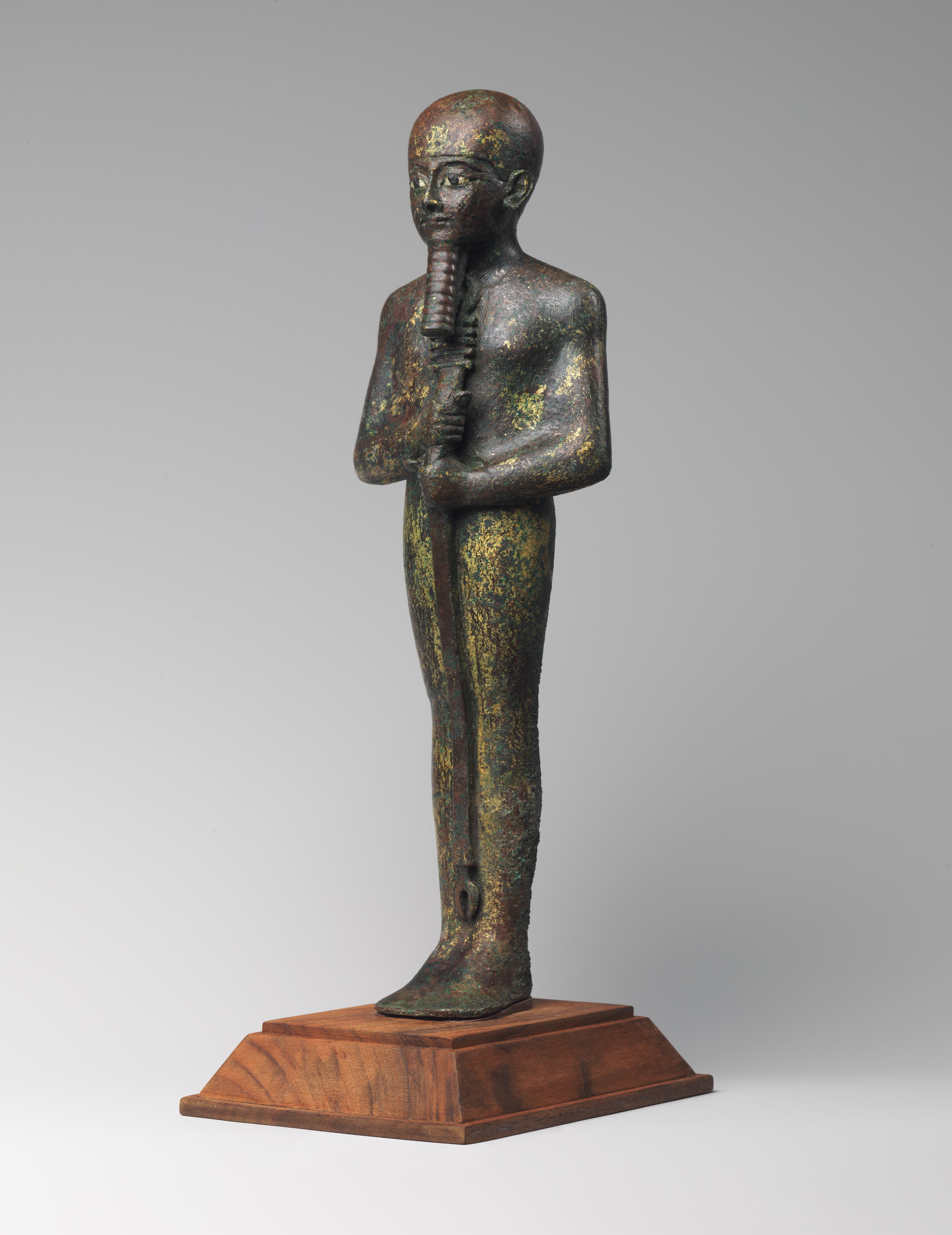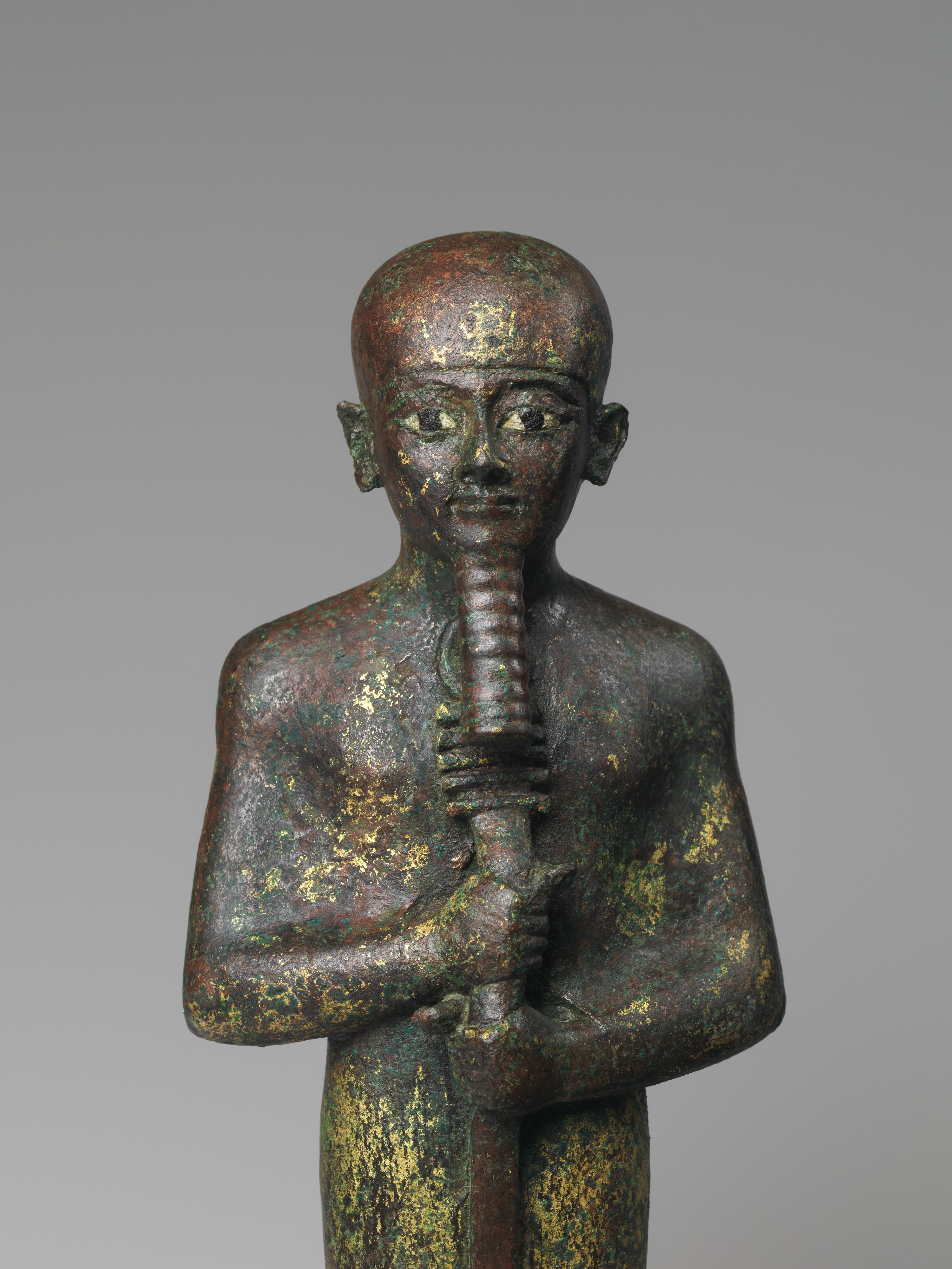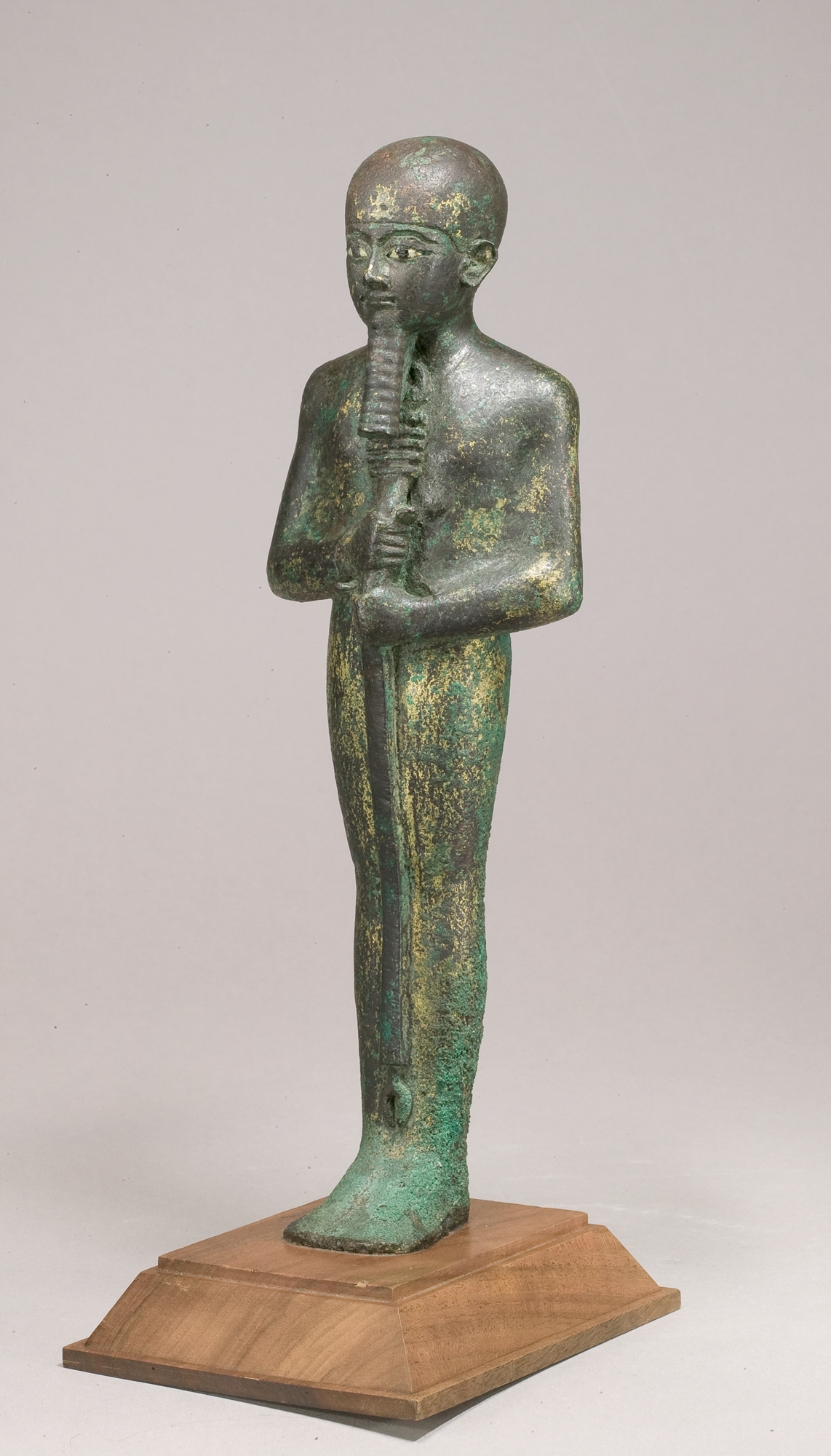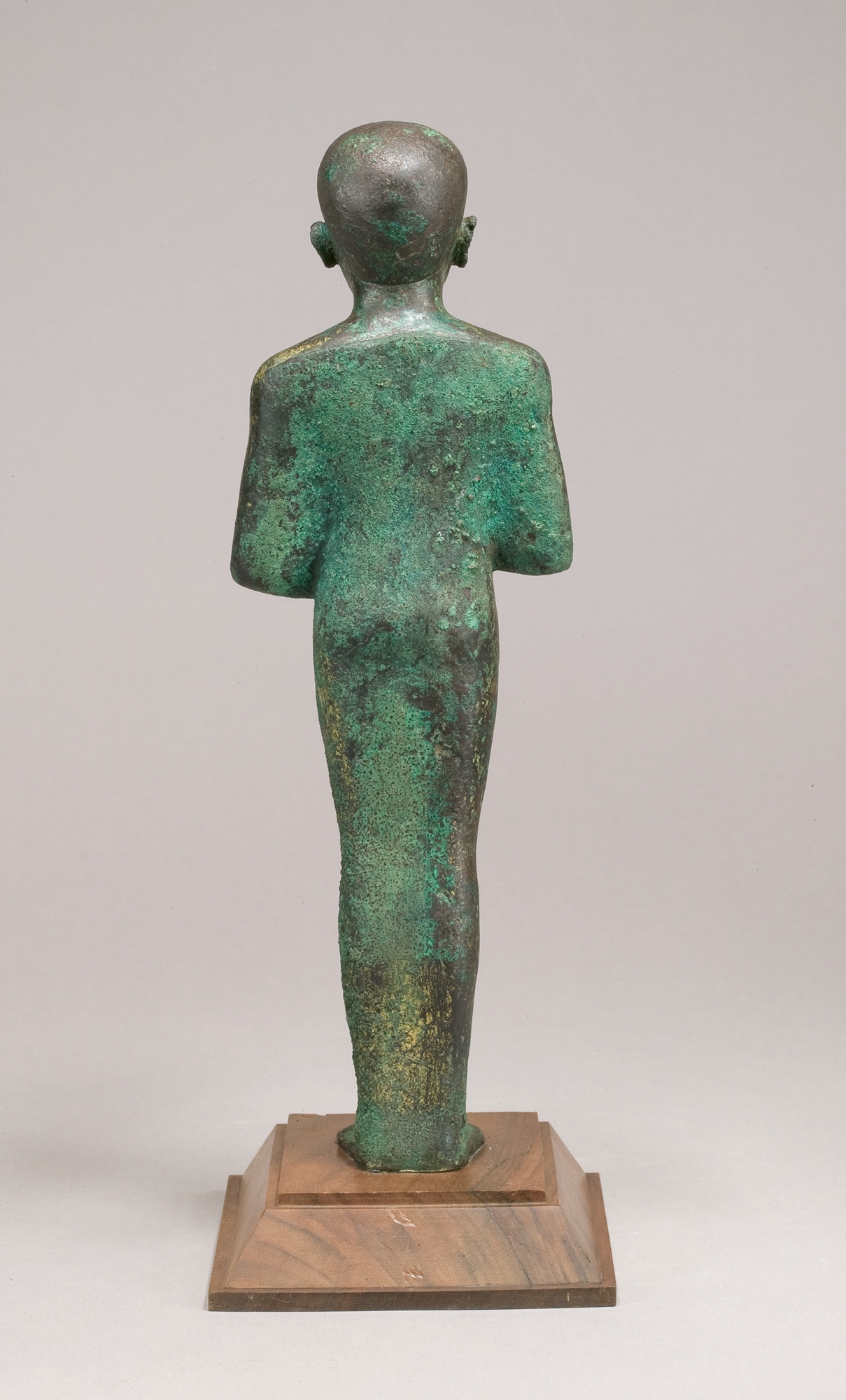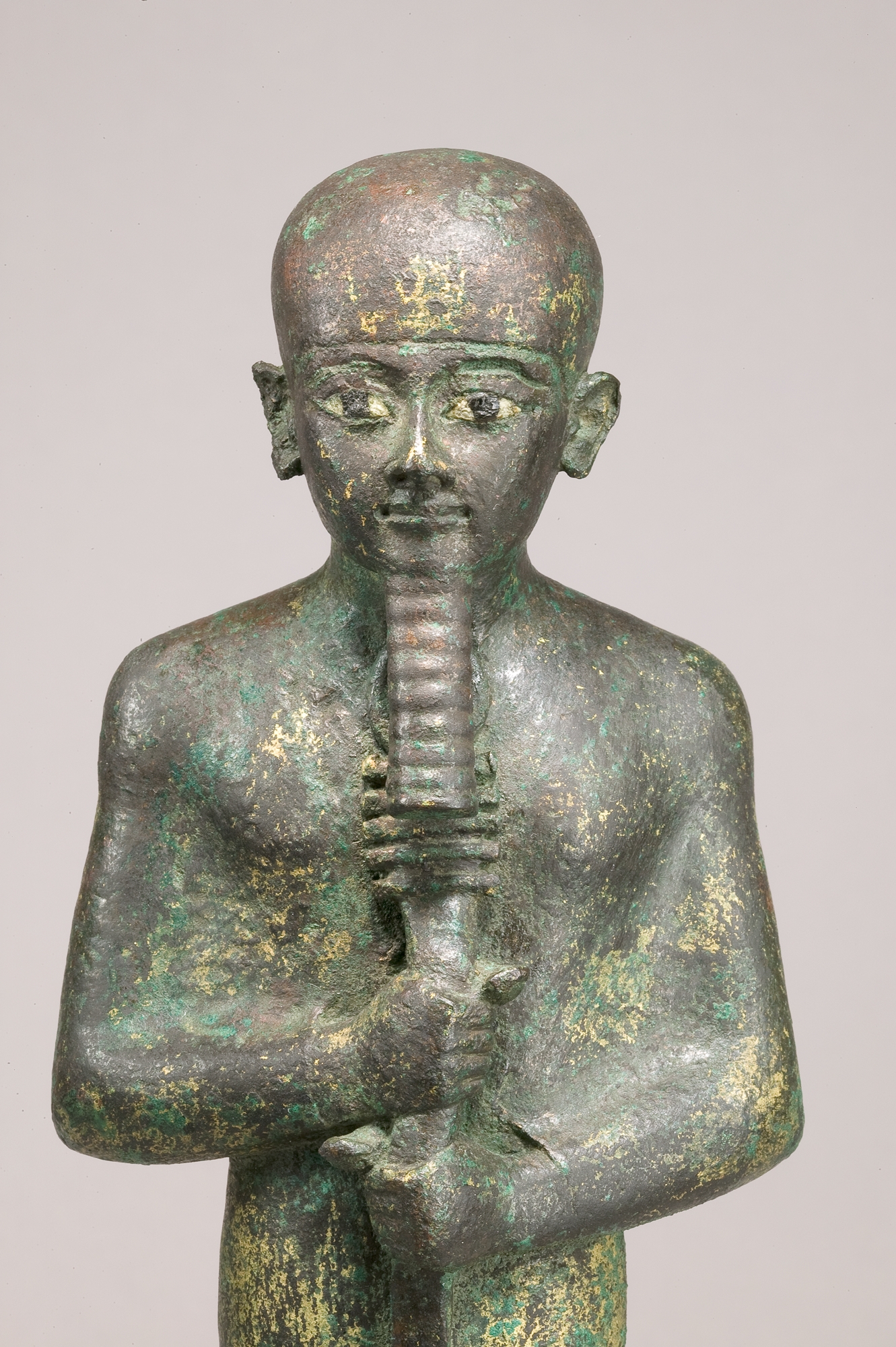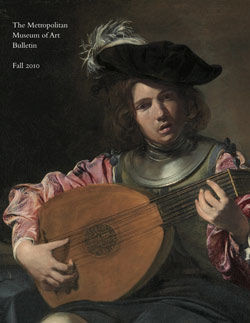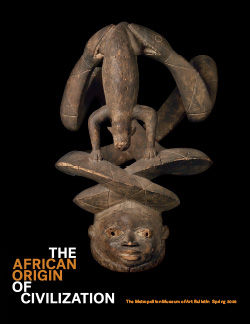Statue of the God Ptah
Third Intermediate Period
The great Egyptian god Ptah was a deity whose many aspects include those of both a creator god and a god who listens to individuals’ prayers. Ptah’s name was commonly accompanied by the epithet Nefer-Her, or “Benevolent of Face,” a description suited to the serene and open features of this particular image.
The statuette is remarkable for its beauty and size, state of preservation, elaborate manufacture provisions, and its demonstrable date to the Third Intermediate Period. The Third Intermediate Period was, as its name suggests, essentially a sort of Egyptian Middle Ages: political power was fractured, but temples became magnets for art and invention expressed in the metal images of gods and temple functionaries. They were large and finely executed by diverse and inventive means.
A statue like this would have been housed in a wooden shrine; when the shrine doors were open, the statue might have been the recipient of offerings and incense or the focus of ritual chants and music. When its period of use was over, the still sacred statuette would be deposited in a cache within the temple walls.
#3520. Statue of Ptah and Other Gods
Due to rights restrictions, this image cannot be enlarged, viewed at full screen, or downloaded.
This artwork is meant to be viewed from right to left. Scroll left to view more.


